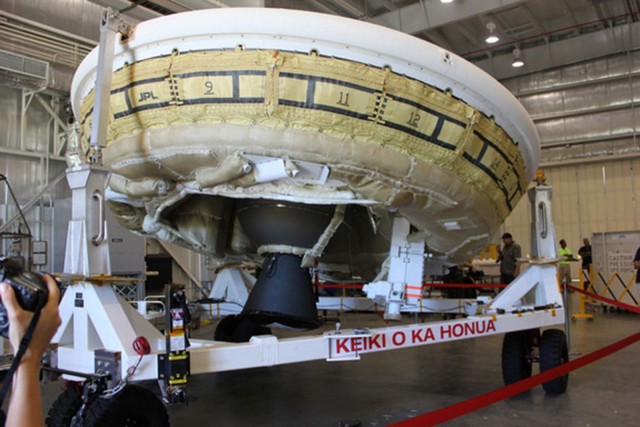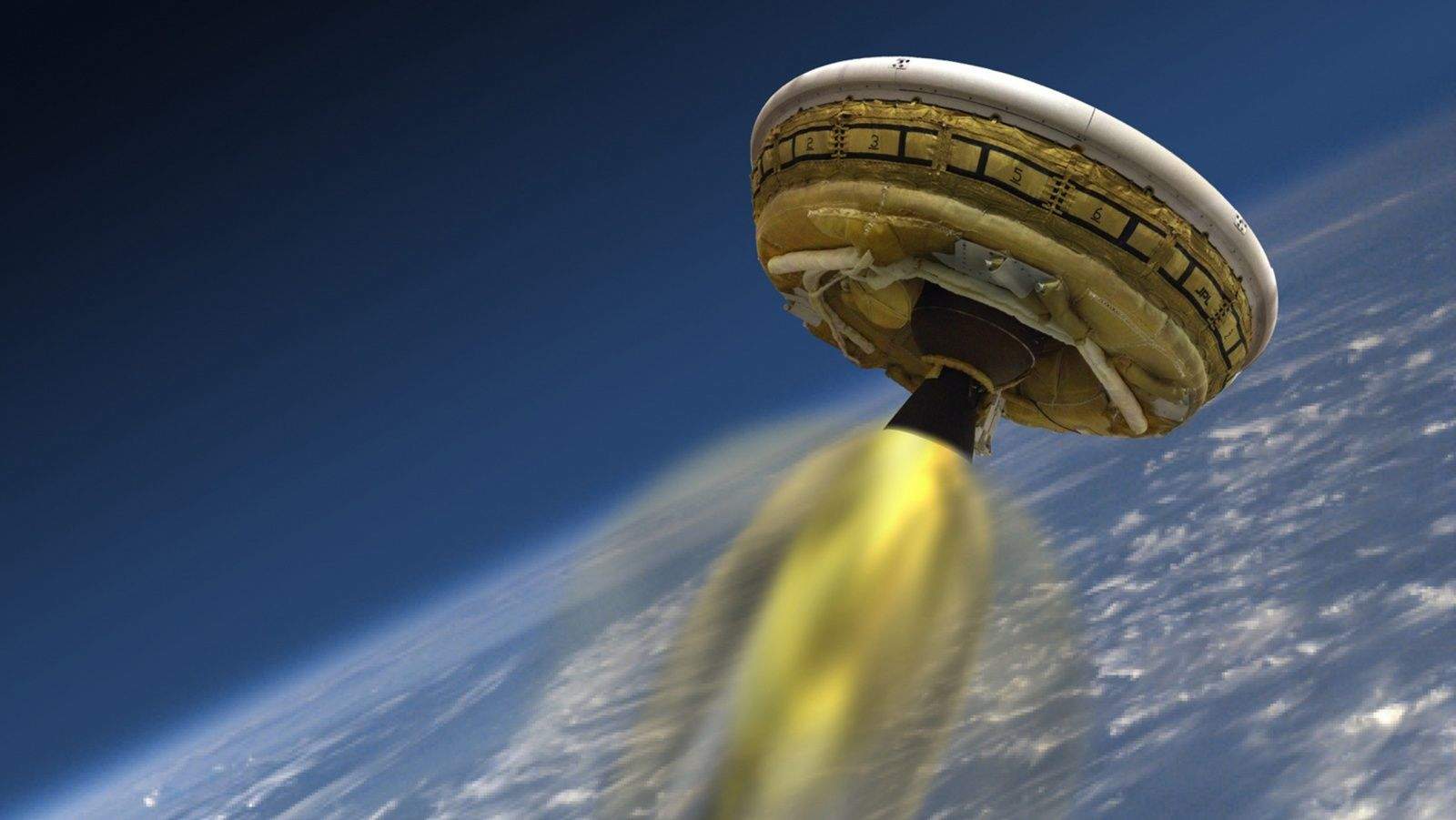Flying saucers from Mars is the stuff of science fiction. But a flying saucer from Earth is part of the mission to get astronauts to the Martian surface.
NASA and the Jet Propulsion Laboratory completed a successful spin test of a saucer-shaped experimental craft in front of a live web audience Tuesday. The saucer will next lift off by balloon from Hawaii, where from 120,000 feet it will be dropped to test a new kind of parachute and an inflatable Kevlar ring to add drag for a slower descent.
The Mars mission has gained a great deal of traction and media attention in the last year. In December, NASA successfully launched Orion, an unmanned test spacecraft that could bring astronauts to Mars, and astronaut Scott Kelly started a year-long mission aboard the International Space Station last week to test human endurance in zero gravity.
NASA’s new technology arm has been quietly working on the equally difficult challenge of getting heavier payloads to the Red Planet so humans can survive for extended durations and do meaningful scientific work.

Right now, NASA could land about 1 ton on the surface of Mars. But for astronauts to have shelter and gear for extended science experiments, engineers are trying to make spacecraft that can haul cargo weighing up to 20 tons.
The flying saucer, known as the Low-Density Supersonic Decelerator (LDSD), is designed to test two important technologies for slowing down a heavy craft as it enters the thin Martian atmosphere at roughly 10,000 miles per hour.
The Kevlar ring would enlarge the footprint of a spacecraft, thus creating more drag to slow it down. Then it’s up to the parachute to soften the landing. To land a heavier craft, engineers have designed a sail of concentric rings, with a couple thousand panels that each puff out like a sail. This chute is three times the size of the one that helped NASA land the Curiosity Rover on Mars.
Last June, a test launch of the LDSD into the upper atmosphere from Hawaii was successful except for the supersonic parachute, which tore up as it opened. The next test in Hawaii with the new chute is scheduled for June.
The spinning rockets attached to the outside of the LDSD give it stability as it reaches trajectory, much the way a bullet or arrow stays on target by spinning. Tuesday’s spin test looked like what a garage would do to balance a tire. None of the NASA reports say whether astronauts would ride in a craft that would spin at 60 revolutions per minute.
Considering a manned Mars mission won’t happen until sometime in the 2030s, it’s hard to know for sure what the first spacecraft going there will look like.


